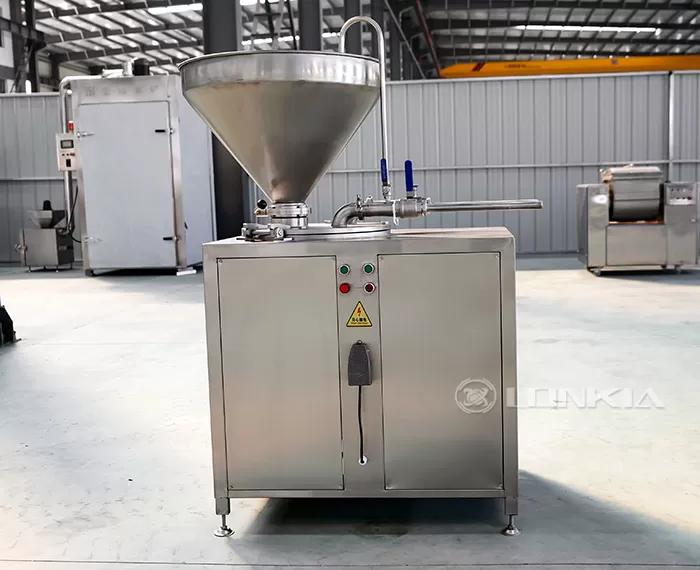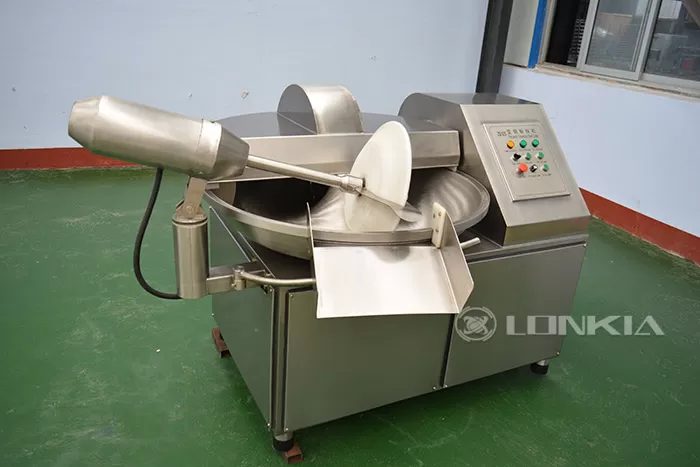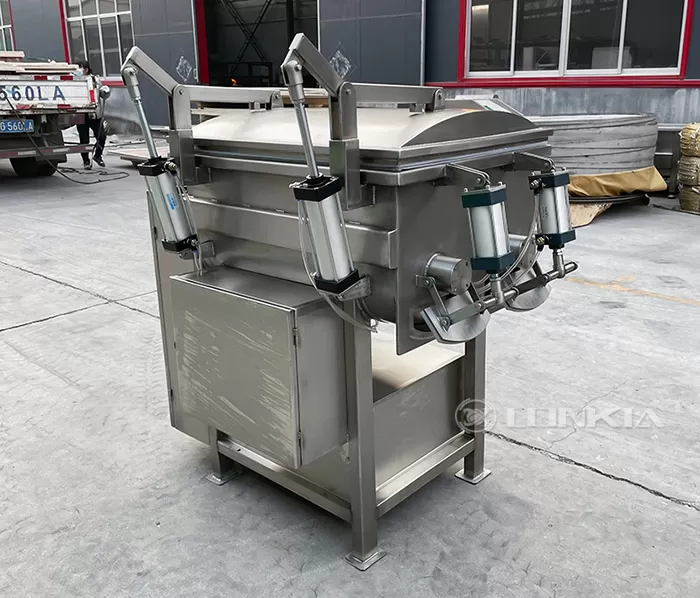When it comes to sausage production, the quality of your final product largely depends on the equipment you use in your production line. The right machinery can enhance efficiency, reduce labor costs, and improve product consistency, while the wrong choice can lead to waste, lower output, and compromised quality.
Choosing the best equipment for your sausage production line is a decision that requires careful consideration of various factors, from your production scale to the type of sausages you’re making. In this blog, we’ll guide you through the key considerations when selecting essential equipment for your sausage production line to help ensure smooth operations and high-quality products.
1. Understand Your Production Needs
Consider the Type and Volume of Sausages
Before you even think about specific equipment, it’s crucial to understand your production needs. Are you producing fresh sausages, cooked sausages, or smoked sausages? The type of sausages you’re making will dictate the equipment required, from mixers to smokers.
- For high-volume production, look for machinery that can handle larger batches, such as automatic filling machines and high-capacity stuffers.
- If you're producing specialty sausages with specific recipes or shapes, you may need more customizable equipment to achieve the desired results.
Scale of Production
- Small-scale operations may only require manual machines and simpler setups for smaller batches, while large-scale manufacturers will benefit from automated systems that offer faster production rates and reduce labor costs.
2. Focus on Key Equipment Components
A well-designed sausage production line typically consists of several key components, each playing a crucial role in the manufacturing process. Here’s a rundown of the most important ones:

Sausage Stuffing Machine
The stuffing machine is where your sausage mixture gets placed into casings, making it one of the most critical pieces of equipment. Depending on your scale and needs, you can choose between manual stuffers, semi-automatic stuffers, or fully automatic machines for high-volume production.

Meat Mixer
A meat mixer is essential for blending the sausage ingredients evenly, ensuring that the fat, meat, and spices are well-distributed. Look for machines that can handle both small and large batches and offer consistent mixing without damaging the ingredients.

Vacuum Mixer
For superior product quality and texture, a vacuum mixer can remove air from the mixture, helping preserve freshness and ensure better texture in the sausages. This is ideal for sausages that require precise texture and appearance.
Sausage Linker
A sausage linker is used to create uniform sausage links after they’ve been stuffed. Automatic or semi-automatic versions can dramatically increase speed and consistency compared to manual linking, which can be time-consuming and labor-intensive.
3. Automation vs. Manual Equipment: What’s Best for You?
Manual Equipment:
- Best for small-scale production or businesses that are just starting out.
- Lower upfront costs but higher labor and slower production speeds.
- Manual equipment requires skilled workers and may have limitations in consistency and efficiency.
Automated Equipment:
- High-capacity production lines designed for large-scale operations.
- Provides faster, more consistent, and error-free production.
- Higher initial investment but long-term cost savings due to increased efficiency, reduced labor costs, and lower error rates.
Hybrid Solutions:
Many sausage producers opt for semi-automatic systems, which combine the benefits of both manual and automated machinery. These setups offer increased efficiency with a smaller investment compared to fully automated solutions.
4. Consider Hygiene and Maintenance
Maintaining hygiene in sausage production is critical to ensuring food safety and quality. Choose equipment that is designed with easy cleaning in mind, as proper sanitation will prevent contamination and improve the shelf life of your sausages.
- Stainless steel equipment is often preferred in the industry due to its resistance to corrosion and ease of cleaning.
- Look for machines with removable parts, sanitary seals, and washable components that can be easily cleaned and disinfected.
Also, consider the maintenance needs of your equipment. Equipment that is easy to maintain and repair can save you time and money in the long run. Ensure that the manufacturer provides adequate warranty support, spare parts, and technical assistance.
5. Evaluate Energy Efficiency
Energy consumption in sausage production can significantly impact your operating costs. Choose equipment that offers energy-saving features to minimize utility expenses. Here’s how you can reduce energy consumption:
- Opt for machines that incorporate heat recovery features or efficient motors.
- Equipment with automated controls can optimize processing times, reducing unnecessary energy use.
- Investing in energy-efficient machines may come with a higher upfront cost, but the long-term savings can be substantial.
6. Budgeting for Equipment
Selecting the right equipment also involves setting a budget. Here are some points to consider:
- Initial Investment: Automated and high-capacity machines tend to have higher upfront costs.
- Maintenance and Running Costs: Don’t forget to account for ongoing costs like spare parts, energy consumption, and labor costs.
- Long-Term Savings: Though higher-quality equipment may have a larger initial cost, it often results in better productivity, fewer breakdowns, and lower operating costs over time.
Conclusion
Choosing the right equipment for your sausage production line is a vital decision that will affect both the efficiency and quality of your operation. By understanding your production needs, focusing on key equipment, considering automation options, and taking hygiene and energy efficiency into account, you can make an informed decision that will lead to better production outcomes and cost savings in the long term.
At LONKIA Machinery, we specialize in providing state-of-the-art sausage production equipment that combines efficiency, durability, and high performance. Contact us today to learn how we can help you upgrade your sausage production line and meet your business goals!
